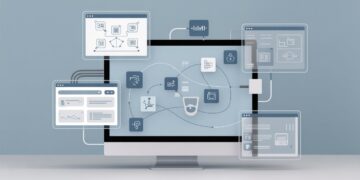EHS management software is an essential tool for creating a culture of safety. It can help your company achieve safety goals quicker, minimizing incidents and helping you create a more efficient work environment.
It can also improve employee morale. When your employees know their well-being is a top priority, they’ll be likelier to do their best work.
Improved Communication
Communication is an important component of any safety culture. EHS management software helps to improve it by allowing for more frequent and streamlined communication with employees, enabling them to reinforce their safety practices continually.
It can also ensure that your organization is fully aware of any safety risks in its workplace and how to minimize them. This can help reduce the risk of accidents, injuries, and environmental impacts.
In addition to communication, a comprehensive EHS management software will provide tools to help your team understand their responsibilities and ensure they comply with regulations. This will also help to increase efficiency and productivity by allowing your team to focus on other aspects of your business.
Another benefit of a good EHS management system is that it can save teams time by streamlining processes and automating tasks. This can result in 50% or more time savings on administrative tasks.
A good EHS management system will be easy to use and incorporate features that your team will find useful. This can include a mobile-friendly interface, reliable customer support, and flexible reporting options. In addition, it’s important to choose a solution that integrates with other business systems and databases.
Fostering Open Communication
Another way that EHS management software can improve safety culture is by fostering a positive environment for open communication. This can be done through the use of a variety of tools, including email notifications and automated workflows.
For example, many systems support workforces of any size by storing training certificate details and automatically sending out reminders about expiration dates. This ensures that workers are fully updated with all necessary training and certifications.
As a bonus, most EHS management software platforms provide a comprehensive view of big data related to health and safety. This allows administrators and managers to see a more comprehensive picture of the company’s environmental and health policies and the trends that may indicate a shift in those policies.
Enhanced Reporting
As a part of a company’s overall safety culture, it is important to ensure that all staff members understand their responsibilities for reporting and maintaining health and safety parameters. EHS software can help companies achieve this by streamlining the reporting process so that employees can quickly complete their reports and return to more important work.
Moreover, EHS management software can also help businesses adhere to regulations and ensure compliance. This can help reduce the risk of fines and repercussions, often associated with poor health and safety parameters maintenance.
Another benefit of EHS management software is that it can help improve business processes, thereby improving employee productivity and morale. The software can help streamline data collection and management, saving companies time and money.
Additionally, EHS software can be customized or configured to fit a company’s specific needs. This allows businesses to create a system that best suits their unique requirements, which is a better option than buying pre-made off-the-shelf software.
One of the main benefits of EHS software is that it helps businesses proactively manage their safety efforts, allowing them to track results and spot trends in real-time. This makes it easy to identify issues and respond effectively, ensuring the long-term safety of the company’s employees.
Enhanced Compliance
EHS compliance is one of the most important factors in keeping your company safe and operating within legal regulations. It’s also a crucial element in protecting the environment and maintaining employee safety and public health.
Using EHS management software can help you streamline your EHS process and ensure your organization fully complies with all applicable laws and regulations. It can also help you make the most of existing safety programs and respond quickly to new standards or regulations in your industry.
An effective EHS management program can improve your safety culture by empowering your employees to protect their and others’ well-being. It can also show them you’re serious about making their workplace safer.
A robust system can also increase your employee morale by showing them that their safety is a priority and helping them understand that you value their work and contribution. Boosting employee morale also contributes to improved productivity and can help you secure customer loyalty.
To choose the right EHS management software, you need to start with a detailed analysis of your needs. This will include determining which processes are most important and how you expect your software to support these processes.
Enhanced Collaboration
EHS management software helps businesses of all sizes to conduct their safety programs efficiently and effectively. This saves time and money by minimizing risks linked with environmental regulations and enhancing operational efficiency, employee morale, and business retention.
When employees have a centralized place to collaborate, they’re more likely to follow procedures and share their experiences with other staff members. This is particularly important for EHS teams, as they need to consistently track and analyze safety data to keep the workplace safe.
The EHS software also provides a central point of information that all teams can access and use to make informed decisions about their operations. By democratizing data, team leaders can have better conversations and build a collaborative culture to improve performance.
Using EHS management software eliminates this issue by putting all your compliance obligations, permits, tasks, documents, and inspections in one place. It breaks down silos, creates organizational visibility, and streamlines regulatory requirements like OSHA annual reporting. Moreover, it makes tracking performance easy and identifies trends that can improve safety performance.
Also Read Interesting Articles At: Tech New Master.

















